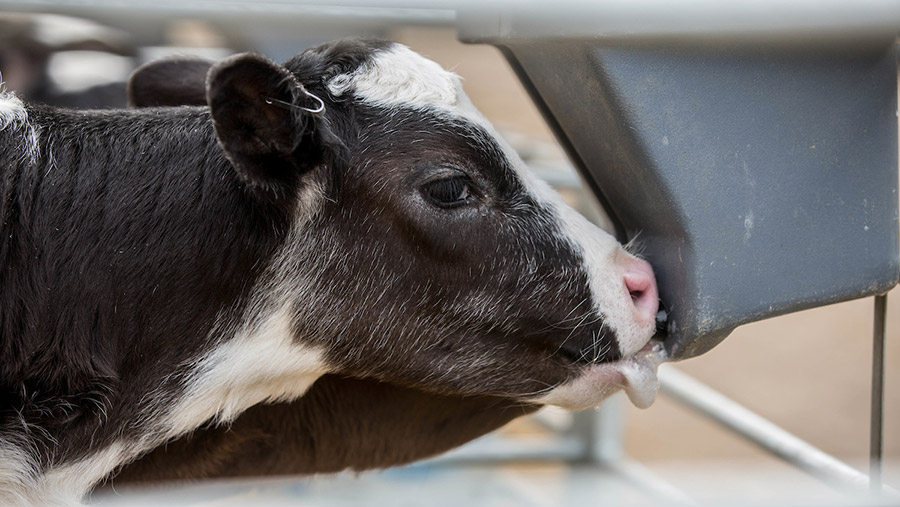How early life dairy calf nutrition affects long-term metabolism
 © Tim Scrivener
© Tim Scrivener Researchers are discovering more about early life programming and how critical this is for adulthood, according to Trouw Nutrition’s Dr Leonel Leal.
This starts with colostrum, but also includes feeding transition milk, feeding more milk replacer, and weaning later, with a gradual step-down policy.
He said it is recognised how the first 1,000 days of a human baby’s life affect adulthood:
“Some 80% of adult diseases can be linked to early life environment; only 20% are related to genetics. We can expand that to calves.”
See also: How cow minerals unlocked calf health for Somerset farm
The 1,000-day challenge for calves starts before birth and involves looking at the nutrition supplied for calf development while the cow is producing a lot of milk.
“We need to understand the true consequences of nutrition partitioning in the cow,” he said.
The effect of colostrum intake and milk feeding regime on the calf has a big effect on her development, as do weaning age and method – and all need to be reconsidered, he said.
He also pointed to antimicrobial use in the young calf adversely affecting the calf’s long-term metabolism.
Calorie conversion
“In its first three months, a calf is fed less than 300 litres of milk, but if left on the dam it can drink 800 litres, so there is a 66% feed restriction.
“In the first few weeks of life, there is an extremely efficient conversion of calories in milk to bodyweight.
“Besides growth, we see organ development – liver, kidneys – and the mammary gland also responds to an increased nutrient supply.”
Milk is the main driver of growth until weaning, he added, pointing to research showing calves fed 9 litres/day were 20kg heavier at 54 days of age.
“However, colostrum has also been shown to have a significant effect on growth, independent of milk-feeding.
“Calves with poor colostrum intakes have a 5kg difference in liveweight and by week 13, this difference is 20kg,” he said.
Later weaning
Reporting on work with AgResearch in New Zealand, that looked at weaning age of 10 weeks or 20 weeks, Leonel said calves weaned later were growing faster at seven and 17 weeks of age and were still ahead in weight at 17 to 27 weeks.
Long-term studies begun in 2014, feeding dairy calves either 4 litres/day or 8 litres, not only showed faster growth rates, but heifer calves fed 8 litres/day had higher milk yields in their first two lactations and were less prone to becoming “fat cows”.
At 60 days in milk in the first lactation, scientists are seeing a lot of metabolic pathways that are still significantly different, and are linking this to energy partitioning – or feed efficiency – and ultimately herd survival.
Dr Leonel Leal was speaking at Trouw Nutrition’s recent third calf symposium
